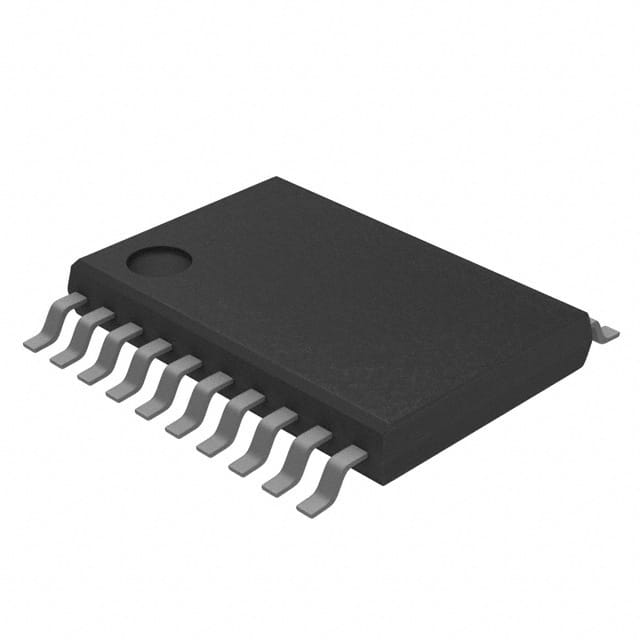Viz Specifikace pro podrobnosti o produktu.

ATTINY87-A15XD
Product Overview
- Category: Microcontroller
- Use: Embedded systems, IoT devices, and other electronic applications
- Characteristics:
- Low power consumption
- High performance
- Small form factor
- Wide operating voltage range
- Package: 32-pin QFN
- Essence: A versatile microcontroller designed for various applications
- Packaging/Quantity: Available in reels of 2500 units
Specifications
- Architecture: AVR
- Flash Memory: 8KB
- RAM: 512B
- EEPROM: 256B
- Operating Voltage: 1.8V - 5.5V
- Speed Grade: 15 MHz
- Digital I/O Pins: 26
- Analog Input Channels: 12
- PWM Channels: 6
- Communication Interfaces: SPI, I2C, UART
- Timers/Counters: 3
- ADC Resolution: 10-bit
- Operating Temperature Range: -40°C to +85°C
Detailed Pin Configuration
The ATTINY87-A15XD microcontroller has a total of 32 pins. The pin configuration is as follows:
- VCC: Power supply voltage
- GND: Ground
- XTAL1/CLKI: Crystal oscillator input or external clock input
- XTAL2/CLKO: Crystal oscillator output or clock output
- RESET: Reset input
- ADC0-ADC11: Analog input channels
- PCINT0-PCINT7: Pin change interrupt inputs
- T0-T2: Timer/Counter inputs
- OC0A-OC0F: Output compare outputs
- MOSI, MISO, SCK: SPI communication interface pins
- SDA, SCL: I2C communication interface pins
- RXD, TXD: UART communication interface pins
Functional Features
- Low power consumption enables battery-powered applications
- High-performance AVR architecture for efficient execution of instructions
- Small form factor allows for compact designs
- Wide operating voltage range provides flexibility in various power supply scenarios
- Multiple communication interfaces facilitate connectivity with other devices
- Timers and counters enhance timing and control capabilities
- Analog input channels enable measurement and monitoring of external signals
Advantages and Disadvantages
Advantages: - Low power consumption extends battery life - High-performance architecture ensures efficient operation - Small form factor enables compact and portable designs - Wide operating voltage range accommodates different power sources - Versatile communication interfaces enhance connectivity options - Ample analog input channels for signal monitoring and measurement
Disadvantages: - Limited flash memory and RAM may restrict complex applications - Relatively small number of I/O pins may limit the number of connected peripherals - Lack of built-in hardware encryption may pose security concerns in certain applications
Working Principles
The ATTINY87-A15XD microcontroller operates based on the AVR architecture. It executes instructions stored in its flash memory, utilizing its internal registers and peripherals to perform various tasks. The microcontroller can communicate with other devices through its SPI, I2C, and UART interfaces. It can also generate PWM signals for controlling motors or generating analog output voltages. The ADC allows for analog signal conversion, enabling measurement and monitoring of external signals.
Detailed Application Field Plans
The ATTINY87-A15XD microcontroller finds applications in various fields, including but not limited to:
- Home Automation: Controlling lights, appliances, and security systems.
- Industrial Automation: Monitoring and controlling machinery and processes.
- Internet of Things (IoT): Building smart devices and connecting them to the internet.
- Consumer Electronics: Powering wearable devices, remote controls, and small gadgets.
- Automotive: Implementing control systems for automotive applications.
- Medical Devices: Enabling monitoring and control in medical equipment.
Detailed and Complete Alternative Models
- ATTINY85-A15XU: Similar to ATTINY87-A15XD but with 8KB flash memory and 512B RAM.
- ATTINY88-A15XU: Offers additional I/O pins compared to ATTINY87-A15XD.
- ATTINY84A-A15XU: Lower pin count version with 8KB flash memory and 512B RAM.
- ATTINY167-A15XU: Higher pin count variant with 16KB flash memory and 512B RAM.
- ATTINY4313-A15XU: Lower pin count option with 4KB flash memory and 256B RAM.
These alternative models provide different combinations of features and pin counts, allowing designers to choose the most suitable microcontroller for their specific requirements.
Word Count: 529 words
Seznam 10 běžných otázek a odpovědí souvisejících s aplikací ATTINY87-A15XD v technických řešeních
Sure! Here are 10 common questions and answers related to the application of ATTINY87-A15XD in technical solutions:
Q: What is the ATTINY87-A15XD microcontroller used for? A: The ATTINY87-A15XD is a microcontroller commonly used in various technical solutions, such as embedded systems, IoT devices, and automation applications.
Q: What is the maximum clock frequency supported by the ATTINY87-A15XD? A: The ATTINY87-A15XD supports a maximum clock frequency of 20 MHz.
Q: How much flash memory does the ATTINY87-A15XD have? A: The ATTINY87-A15XD has 8 KB of flash memory for program storage.
Q: Can I use the ATTINY87-A15XD for analog signal processing? A: Yes, the ATTINY87-A15XD has built-in analog-to-digital converters (ADCs) that can be used for analog signal processing.
Q: Does the ATTINY87-A15XD support communication protocols like UART, SPI, and I2C? A: Yes, the ATTINY87-A15XD supports UART, SPI, and I2C communication protocols, making it suitable for interfacing with other devices.
Q: What is the operating voltage range of the ATTINY87-A15XD? A: The ATTINY87-A15XD operates within a voltage range of 1.8V to 5.5V.
Q: Can I use the ATTINY87-A15XD in battery-powered applications? A: Yes, the low power consumption of the ATTINY87-A15XD makes it suitable for battery-powered applications.
Q: Does the ATTINY87-A15XD have any built-in timers/counters? A: Yes, the ATTINY87-A15XD has multiple built-in timers/counters that can be used for various timing and counting applications.
Q: Can I program the ATTINY87-A15XD using the Arduino IDE? A: Yes, the ATTINY87-A15XD can be programmed using the Arduino IDE with the help of appropriate libraries and hardware configurations.
Q: Is the ATTINY87-A15XD suitable for real-time applications? A: The ATTINY87-A15XD is not specifically designed for real-time applications, but it can handle simple real-time tasks with proper programming techniques and optimizations.
Please note that these answers are general and may vary depending on specific use cases and requirements.

